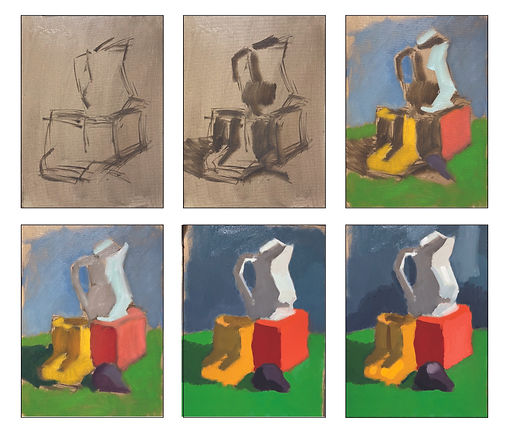
THE LOWER SCHOOL CLASSROOM
Children are free and natural artists at heart. Self-expression and the ability to interpret through personal experience shines in the lower school years.
Art making is a multi-purpose tool used as a means of self-expression, sequential problem solving, and a bridge between science, math, and literacy. Picture-making contributes to the social component of storytelling.
Children are naturally focused while making art. They enjoy the process and take pride in the outcome of their work.

THE UPPER SCHOOL CLASSROOM
The academic process of drawing and painting is introduced, and a strong foundation of skill-building begins.
Drawing with straight lines and angles, thinking structurally while interpreting 2 and 3-dimensional form, and simplified value and color are explored.
Students begin to see how diverse subject matter contains gesture and expression, and how they go about revealing this in their work.
Students explore the science of how light reveals form and color, and are encouraged to recognize this throughout their environment. This teaches young artists to see and interpret creative opportunities everywhere.

THE ADVANCED PROCESS
An important and often overlooked teaching tool in making art is the development of a process. In order to strive towards success, students must progress and improve in stages.
The complexities of gesture, proportion, value, color, composition, and material handling are examples of elements that need to be handled independently of each other.
Given a strong foundation, artists have the necessary tools to take on a variety of subject matter with confidence. Enabling a linear approach to learning allows greater success with the outcome, and helps students enjoy the process.